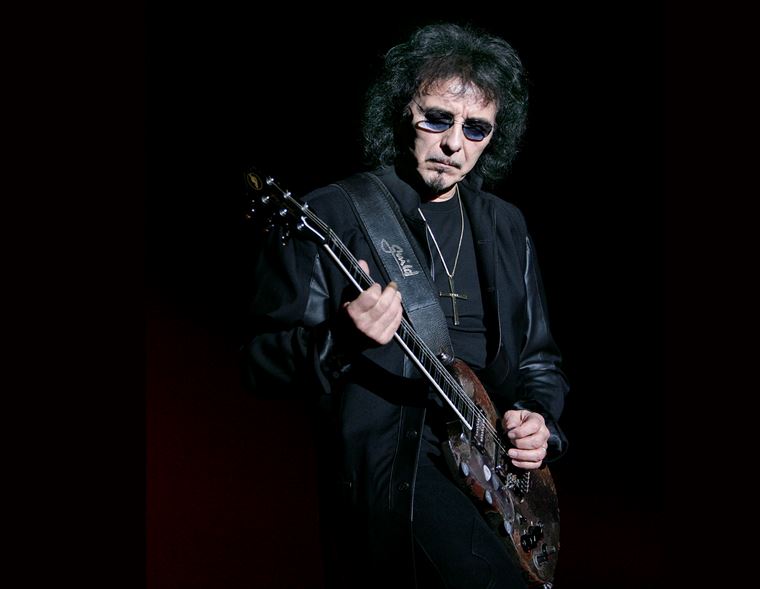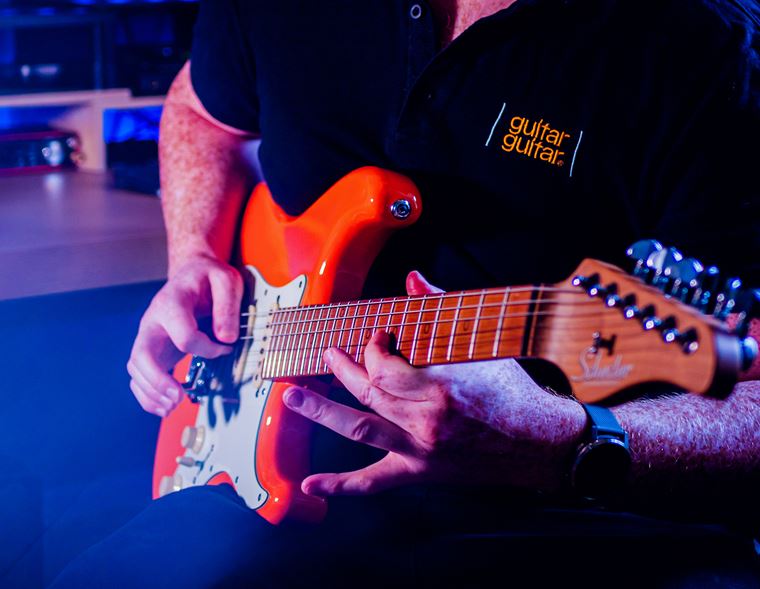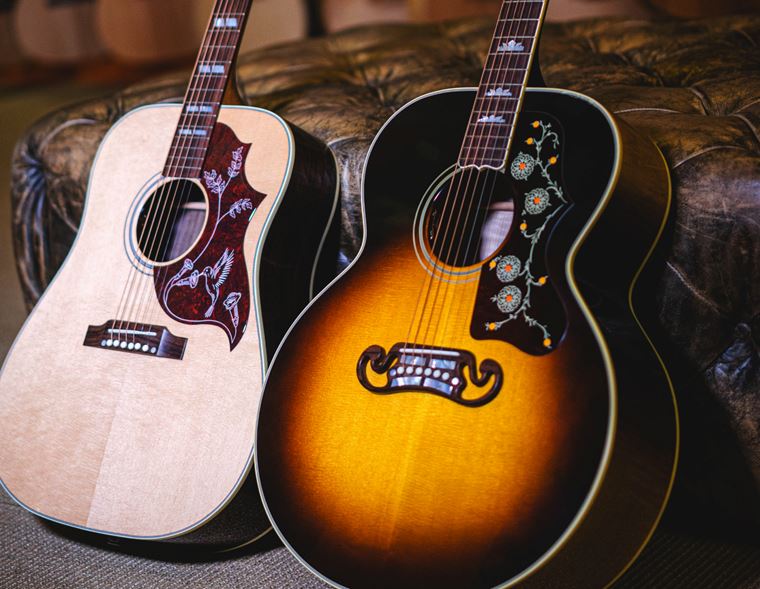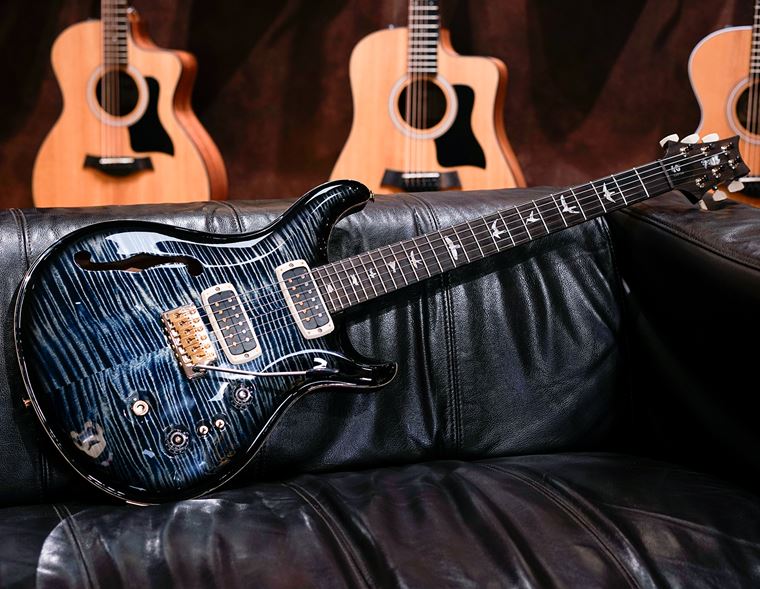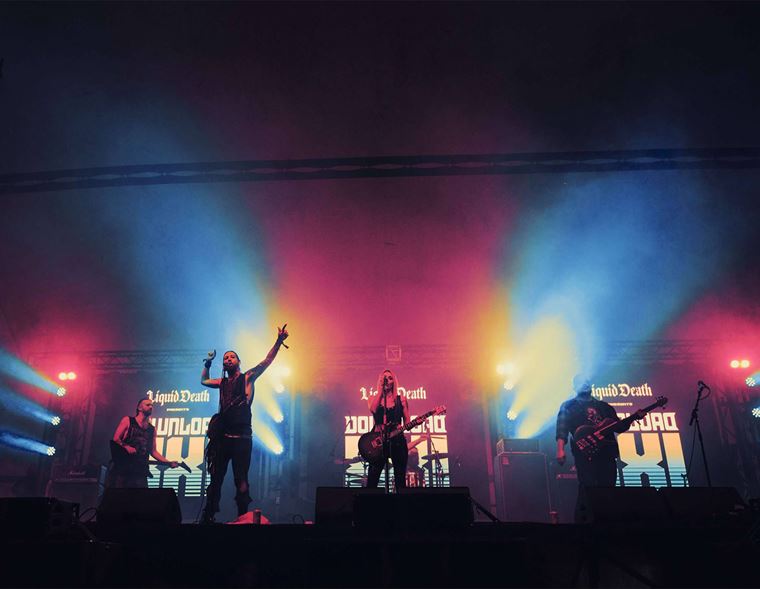Nailing the Classic Rock Tone
Tone is subjective. To some, the Metal Zone is the ultimate pedal, to others, it sounds like plugging into a box full of bees. Neither is the right answer... (except the first...) but while taste comes into it, there are some guitar sounds that are undeniable. Rock has evolved to become such a broad term that nailing a contemporary 'rock' tone is almost impossible. The guitar world is a fascinating place right now with loads of diverse artists who all sound, well, different. However, when you think of classic rock, your mind immediately takes you to a specific sound. Now, it's not without its own varieties - Eric Clapton sounds pretty different to Angus Young but they both fall within that bracket to a degree. Regardless of what you think is the perfect tone, we thought we'd break down some classic rock essentials to get you started. You can follow your ears from there!
Choose your gear
We know what you're thinking, it's easy to choose certain guitars for different sounds when you're a fully-fledged rockstar with an unlimited budget and an army of roadies at your beckoned call. It's all relative though! If you think about it, classic rock wasn't always about the most expensive, cutting edge axes and amps, particularly in the early days. It was more about spending time finding the right guitar, or the right rig and pushing what a fairly simple setup could do to the very limit. When you're young, the first guitars you probably remember recognising are Strats and Les Pauls and with good reason. Both shapes have played a huge part in defining the sound we now think of as 'classic' so we'll concentrate on them for now.
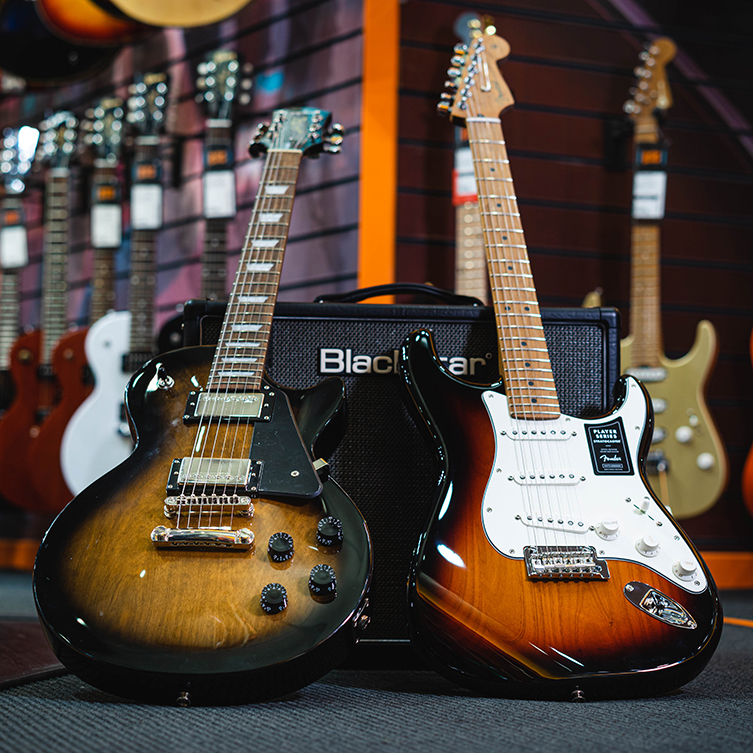
Now, to really simplify which instrument is the right choice, kind of comes down to single coils vs humbuckers. Generally speaking, humbuckers tend to provide chunkier, warmer tones than single coils, which have a sharper, more treble-heavy sound. All of this starts to get a bit messy when you talk about introducing coil taps and the wide range of options available but let's keep it simple, after all, that's what the rock pioneers tended to do! You get some tremendous quality models at attainable prices these days so if you haven't chosen your weapon already, take some time experimenting with each option until you find the right fit. Squier and Epiphone's axes are fantastic starting points for anyone on that particular mission!

Let's not forget, your amp is a crucial component too but thankfully, so many have been based on these glory days of rock that whatever you're working with is bound to accommodate your quest for tone to some degree. Marshall, of course, have always provided amps which work extremely well for these types of sounds, while Fender's have long been relied on for chimey, lush cleans. More modern brands such as Blackstar also cater to classic and blues rock extremely well but like we said, this article isn't about going shopping but working with what you have. Grab your axe of choice, plug into whatever's there and let's get started.
Make your EQ work for your guitar
A decent first step is to play about with your amps EQ. This is probably the first place you'd look at on your control panel when trying to dial in your tone - the fundamentals. For these types of sounds, we'd advise keeping your mids fairly high no matter what you're playing. Mid-range is important for rock music; your guitar sits right on top of the bass and drums and its important to have that distinction so the instruments can complement and colour each other. After bringing that up til you sound nice and punchy, begin to dial in your bass and treble to something that feels satisfying. Treble for that extra sparkle, bass for that extra thickness.
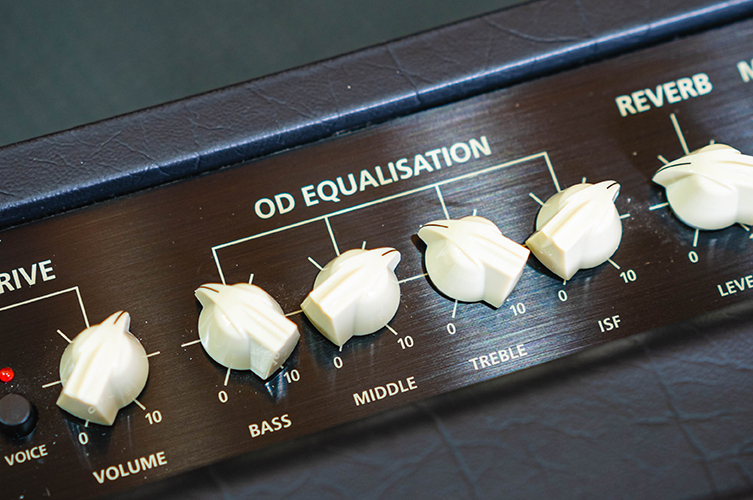
Remember, the tone controls on your guitar will impact what you do here so gradually dial in each control until you start to feel a satisfying warmth to your sound. Generally, we'd recommend not going overboard with treble and bass but it all comes down to what works for your setup. Be sure to play a few different rhythm and lead parts as you mess around with these until it just feels right. Like we said earlier, tone is subjective, all we're doing is giving you a few pointers.
Balance amp and guitar volume
Next up it's time to get things cranked up a little. While guitarists today tend to have a ton of pedals at their feet from the maddest brands you can think of, many of our early guitar heroes instead plugged straight into the amp and mastered the relationship that the instrument had with it. Remember, overdrive pedals essentially drive your amp to break up but you can do that naturally by pushing its volume. Your neighbours may not love you for it but those 30 seconds of bliss before they start banging the wall will be worth it. Knowing your gear inside out is the most essential step to nailing tone, no matter what budget you're on.
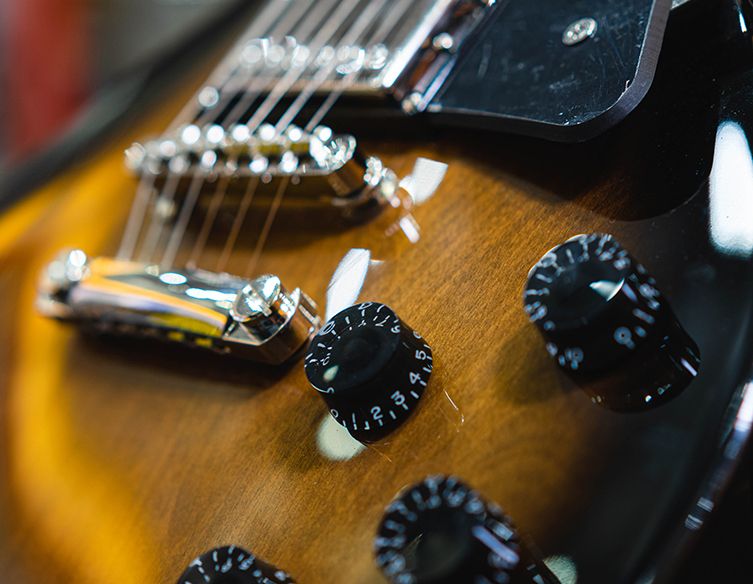
Crank the volume until you feel your speakers start to grumble and find a sweet spot between that and the volume of your guitar. Once you have a nice bit of grit dialled in you can always roll your guitar volume back to tame it, knowing its there waiting for when you need to thicken it up.
Don't go too gain heavy
But what about gain we hear you cry? Yes rockers, we were getting there, have patience. We're not sure where the attitude to turn gain as high as possible came from, possibly Spinal Tap... possibly just natural temptation. However, we find that players often overdo the gain, particularly when trying to emulate the sound we've been discussing. If you listen to isolated guitar tracks, you'll often be surprised to hear that they're not necessarily dripping in high gain as you'd expect. Instead, it's just enough to give your guitar that edge for lead parts and a bit of power for fat rhythm parts and power chords.
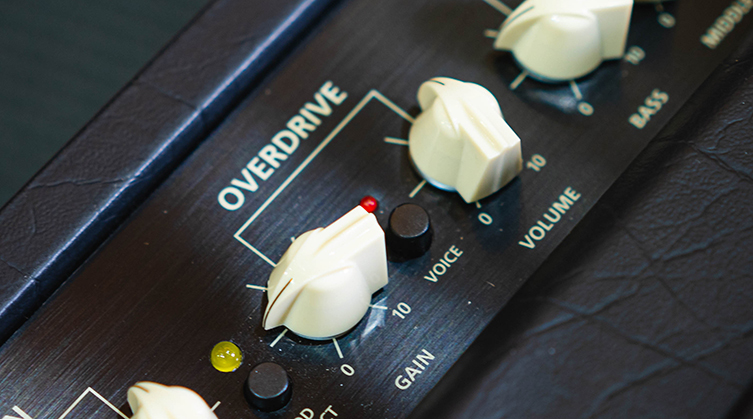
The simplest way to describe pretty much all of this, in fact, is to think of the process as a balance between all of the controls you have available. You want your guitar to sound full and powerful, so it needs to have its own weight, rather than simply relying on the grittiness that gain will bring to it. To help your ears find the sound you're after, listen to a few isolated guitar tracks and you'll soon hear what we mean. A great rock sound is powerful and punchy with just the right amount of breakup - anything else is just a little colour to help you stand out and cut through.
Use Effects to your advantage
All good so far? Great, now onto the effects. Nowadays there are a ton of options available. Everything from the subtle to the zany and weird is catered for and loads of guitarists have mothership like setups at their feet at every show. However, as we've said throughout the article - the key to nailing these coveted classic tones is in simplicity. Rather than all kinds of crazy modulation, go for the classics. A nice creamy sounding overdrive or boost pedal, a high gain distortion for solos and lead parts, a wah for those Voodoo Chile moments, a delay and a nice reverb will do you just fine.
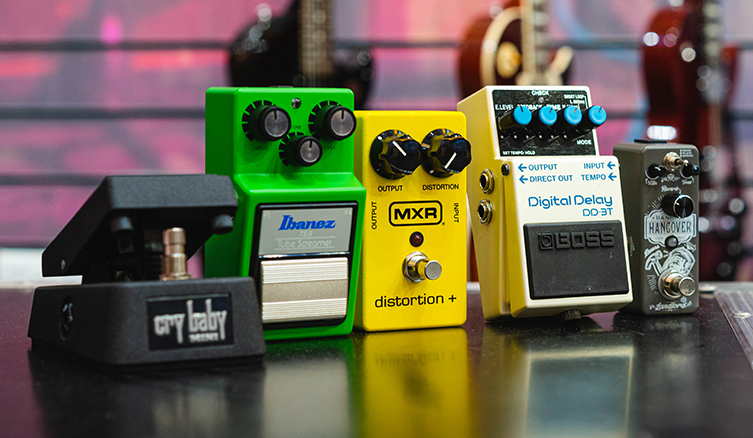
Again, the key is to master these - find sweet spots in each pedal and run them into each other to see how it affects the signal, switch up the order and learn which sounds work for different styles and moments. For rhythm parts, you're going to want a nice chunky overdriven sound so much like your amp, don't go crazy on the high gain. Trust us, it'll make much more of an impact if you dip into it for special face-melting moments rather than leaving it on constantly. Just think of Malcolm Young's iconic rhythm sound - rich and heavy, not fizzy and thin.
Master the playing style
Okay, so now we're on to the most essential and most difficult part of the process... PRACTISE! All of our classic rock guitar heroes went down in history not because of their tone but because of their talent, style and the charisma they displayed through their instrument. There's no shortage of tabs and YouTube tutorials available for this type of playing so learn some of your favourite tunes and pay attention to the techniques used. Most of what's considered Classic Rock was based on blues so it wouldn't hurt to learn a few blues scales and get used to playing along and improvising over some of your favourite tracks. Expressive playing is what you're aiming for, where you really feel each note and make sure your listeners do too. When we spoke with Jared James Nichols, a master of this style, he discussed how important soulful bends and vibratos are to his sound and couldn't emphasise enough that tone comes from talent - in other words, put in the time and everything else gets easier.
It sounds cliche but practice makes perfects and tone largely comes from your fingers - if you're doing everything right with your two hands you'll likely find your amp, guitar and effects fall into place naturally with minimal tweaks to carve out a specific sound. Gear is important but not as important as talent - take the time to learn from the masters and you'll have your rock sound locked in for life.
Final thoughts
Well, that's you just about ready for Woodstock! These tips are fairly basic but that doesn't mean they won't help out more experienced players too. Sometimes stripping your setup down and going back to the roots of rock is exactly what you need to reinvigorate your playing. Plus, its a pretty solid foundation to build upon when you're focusing on other styles. There's a reason these guitar legends have such lasting power and while their songwriting is obviously a massive factor, that doesn't mean their overall sound and energy weren't critical too. While all of the new tech and styles we see these days fascinates and amazes us, there's still something so special about that early rock sound when it was at its most creative and explosive. Go and travel back in time, we bet you have a blast.



